This page contains information on the the printers and publishers that produced the postcards.
Introduction
Most early American photographic postcards were printed in Germany. Germany had long been the leaders in lithography (Wikipedia) and could print postcards better, faster and cheaper than other places. This lasted until the introduction of the 1909 Payne–Aldrich Tariff Act (Wikipedia) which greatly increased the price of imported printed goods. The start of World War I in 1914, ruined whatever was left of business of printing postcards for export - Germany had other priorities and the alllies were blockading the country.
The Postcard History article "Factories that Printed Postcards" is a fascinating read and illustrates the size of these print facilities.
Acmegraph Company
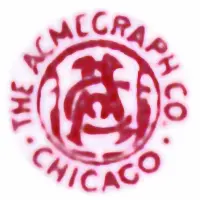 The Acemegraph comapny was based in Chicago and operated between 1908 and 1918.
The Acemegraph comapny was based in Chicago and operated between 1908 and 1918.
Adkins & Burnham Studio
This was on State Road 46 in Terre Haute, Indiana. The studio was both the photographer and publisher of postcards.
Albertype Company
Originally known as Wittemann Brothers, the Albertype Company was founded by brothers Adolph (1845-1938) and Herman L. Wittemann, and owned by Herman. The company operated from 1890 to 1952, and was located in Brooklyn, New York. During its nearly sixty year run, the Albertype Company produced over twenty-five thousand prints, which were distributed across the United States in the form of postcards and viewbooks. The company had agents, including Adolph Wittemann, take photographs of different cities and regions, which were then reproduced as collotypes. In addition to using its own archive of original negatives, the Albertype Company also reproduced photographic images taken by other companies or individuals.
The Albertype Company was created to take advantage of the commercial applications of the collotype, a type of printing which used photographic negatives. In the late nineteenth century, photographic and photomechanical reproduction were becoming increasingly popular for commercial use. The collotype, one of the most commercially successful photomechanical processes, was introduced in 1855 by the French photographer and chemical engineer Alphonse-Louis Poitevin. Poitevin discovered that a bichromated gelatin-covered plate could be used to produce prints after being exposed to light through a negative. The collotype process consisted of numerous steps. First, a plate was rendered light-sensitive by coating it with warm potassium or ammonium bichromated gelatin and heating it at a steady temperature in an oven until dry. After nearly two and a half hours, a negative was placed between the plate and a light source, exposing the gelatin layer to ultraviolet light, and hardening the exposed areas. The hardening of the gelatin resulted in less absorption in the areas which received the most light (those which will appear the darkest in the print). The plate was soaked in cold water, dried, and before printing it was wet again with a glycerine and water solution. Greasy ink was rolled out onto the plate, and did not adhere to those areas which soaked up the most water. The plate was rolled through a press with paper, causing the ink to transfer. The plate could be reused for a limited quantity of reproductions.
Alphonse-Louis Pontevin's process was adapted by C.M. Tessie du Motay and C. R. Marechal, who covered copper plates with bichromated gelatin. The gelatin often separated from the copper during the printing process, so the quantity of images that could be produced from a single plate was limited to approximately one hundred. Joseph Albert, a photographer from Munich, substituted glass for the copper plate, constructed a mechanical press, and also added another layer consisting of silicate mixed with gelatin, albumen or stale beer, which was applied between the gelatin and plate to facilitate adhesion. Albert presented his improved collotype process at the 1868 Photographic Exhibition in Hamburg. Immediately after the introduction of his innovations, companies were able to produce about two thousand prints from each plate using etching presses and hand rollers. Towards the end of the nineteenth and in the early twentieth century, improvements in mechanical presses and a switch to the rotary collotype, a high-speed process using an aluminum plate, meant that up to five thousand collotype prints could be produced daily. Color was added to the collotype process by Albert in 1876.
Collotypes were important to the industry of photographic reproductions because they were fairly cheap to produce, and their range of tones permitted exact reproductions of photographs through a photomechanical process. They are also noted for their ability to accurately reproduce drawings, prints, and watercolors, and are still in limited use to this day. Collotypes were known by numerous names, including "phototype," and "albertype," the name given by Joseph Albert.
They first started printing books and then pioneer cards by 1893 going on to become a major publisher of national view-cards. Their postcards were not numbered and their name appears within the stamp box on their early cards. When the divided back postcard was authorized, the Albertype company created a line down the back of their cards with the words Post Cards of Quality and later with The Finest American Made View Post Cards. Many publishers large and small printed cards though the Albertype Co. They were purchased by the Art Vue Post Card Company in 1952.
Many of their cards were printed in black & white but they also produced a tremendous number of hand colored cards. The style and quality of the way the watercolor paint was applied changed over the years but their RGB pallet remained consistent. One variation of these cards were printed as novelties in a 6 by 8 inch format.
They also printed postcards in duotones and tinted monochromes of various colors. An early type was their Sepia Delft series printed in dark high contrast tones. This was followed years later by their Blue Tone cards that were similar to their lower contrast black & white albertypes except for their color. While most of Albertype's postcards were based on photographs they also produced an unusual set of sepia art reproductions of line drawings.
ANC - American News Company
This company worked out of 119 Nassau Street, New York, NY between 1864 and 1969 and claimed to be the largest publisher and distributor of books, magazines, newspapers, and postcards in the United States exclusively through their national network of affiliated news agencies. The company was formed in by Sinclair Tousey (1818–1887) and lasted until 1957. Their closure caused several distributers to go out of business.
Their earliest cards were printed as black and white views, followed by their lithographic Polychromes. Other series were added each being printed in a different manner. Some of these techniques have a specific letter prefix to their numbers, while others kept adding letter prefixes sequentially from A as they ran out of four or five digit numbers assigned to that card. Many cards with undivided backs were later reprinted with divided backs after 1907. Many small publishers also contracted out postcards though the American News Company. Their printers in Leipzig, Dresden and Berlin, Germany produced most of their cards, but many were manufactured in France and the United States as well.
Unfortunately as ANC changed the number system, or published cards without one at all, there is not a list of cards and their serial numbers that I can find.
They produced cards by various processes using different trade names...
Americhrome - This series was printed in the United States using halftone lithography. These cards are characterized by a medium screen pattern, limited pallet, turquoise skies, and small red block lettering. Their soft look creates the illusion of continuous tone lithography. In later years white border cards and a fine textured linen type card were made that continued to carry the Americhrome name but not the old printed characteristics. They were not always published by the American News Company. Prefix M (1910-1941).
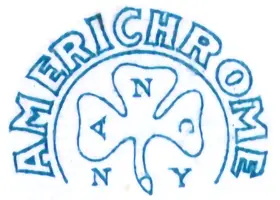
American News Company Americhrome logo
Bromide Chrome - A German made card printed in continuous tone lithography. Bromide Chromes are characterized by a sharp crisp image. Prefix E.
Doubletone Delft - A Gravure card in blue tones printed in Germany
Doubletone Sepia - A Gravure card in blue tones printed in Germany. Prefix AA
Druckchrome - A german made card printed with a black halftone, and then overlaid with continuous toned bright lithographic colors. (1910)
Embossed - These cards were simply colored though cards with the same numbers could have different coloring schemes.
Excelsior - A gravure card printed in Germany. It was marketed as their highest quality black & white card, and most customers chose this type over the cheaper halftone version. Almost all cards in this series are printed in black & white, but there are some examples issued in monochromes of blue and sepia as well as more rare cards that were printed in color and handcolored. Prefixes A, B, D, F (1904-1920), Prefixes AA for Blue, Sepia & Hand colored cards (1908-1925).
Hand Colored - These cards were pinted in black & White and simply colored with a RGB pallet.
Helio Dore - A German made card printed in continuous toned heliogravure. These cards are characterized by flat tones, stylized clouds, and a dull finish.
Litho-Chrome - A German made card printed in continuous tone lithography. Their individual colors are sharp and tend to stand out. They are drawn more toward more solid tones than to texture. Many of these cards were printed with a dominant blue pallet that is sometimes so heavy to render a scene highly un-natural. Prefixes A, B, C, D, E, G, H (1906-1909)

American News Company Litho-Chrome logo
Mezzochrome - A German made card printed in a four-color printing process similar to that of a collotype. They have a very fine dot pattern, which gives them a more photographic than drawn look. Prefix D (1910-1911)
Monotone - A black & white halftone lithographic card. It was promoted as the highest quality budget card but its average look caused few to order cards in this series.
Newvochrome - A German made card printed in four-color continuous tone lithography. The colors on these cards tended to be applied in broad areas, characterized by a sharp look and a dull finish. Prefixes A, B, C, D, E (1909-1912)
Octochrome - A german made card printed using four-color continuous tone lithography. These cards are characterized by a sharp look with hard clean colors that emphasize blues and reds. Prefixes D, E (1909-1912)
Photo Chrome - This series in four-color lithography were printed in Germany and the United States. The grain of the continuous tone on these cards is so fine but distinct it almost resembles a halftone screen on close inspection. Photo Chrome cards are characterized by bright cool colors and a soft hand drawn look. Prefixes D, E, M (1912-1916)
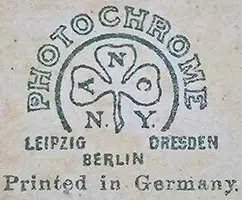
American News Company Photo-Chrome logo
Image kindly supplied by Steven James
Photo Helio - A German made card printed as a four-color continuous tone heliograph. These cards are characterized by a fine grain with smooth color transitions in the skies and crisp foregrounds. A bright cool pallet was usually used.
Plenochrome - These German made cards with a fine grain cards with a dull finish seem to bu printed in color gravure. Many cards were produced using this technique but most only have the name of a local publisher and lack the Plenochrome lable. It is not known if these cards were published through the American News Company or directly through the printer.
Poly-Chrome - A German Made card printed in continuous tone lithography. Its colors are bright and so flat that they almost resemble screenprints. The poly-chrome process was almost exclusively used before 1907. Other European publishers also used the same process but without the Poly-Chrome name. Prefixe A (1903-1907). Cards with the Poly-chrome name were also printed in the United States during the First World War, with an M prefix and white borders, but these lithographic cards have a grained texture. They were not always published by the American News Company.
Quarto-Chrome - A German made card printed in four-color continuous tone lithography. Prefix E (1909-1912)
Sextochrome - A French made lithographic card made by usilizing six-color halftone plates in its printing. These cards are characterized by an extremely fine grain. Prefix D (1917-1929)
Special Colored - A French made card printed in lithography by using four-color continuous tone plates. These cards are characterized by a crisp sharp image in black overprinted with colors in lighter tones. Prefix D (1908-1919)
Steeldrucktone - A series printed in gravure with deep brown tones. Prefix AA (1919)
One of their more mysterious sets of cards were hand colored in France with a more varied than usual pallet and a wider than usual border. While some cards are painted carefully in subtle tones others are loosely painted in bold colors. Only a few of these cards have a logo on them with most only carrying the local publishers name. They seem to have been largely distributed in New England by E.D. West, H.A. Dickerman, and the New England News Company. Many views were also made of Long Island, NY. The logo that appears on only some of these cards have been attributed to the Eastern News Company, but it is hard to say if the logo was used exclusively by them or the American News Company as well. A good many of these cards have no attributes at all.
The American News Company also used other trade names such as Double Tone Green, Rotochrome, and Waterette. The Waterette cards seem to have been produced in cooperation of William Ritchie & Sons, Ltd. of London, England, and Edinburgh, Scotland, and featured artist-signed postcards of watercolors.
Art Manufacturing Company
Originally based in Amelia, Ohio this company operated between 1908 and 1915. They published a wide variety of postcards types including color and black & white views, greeting and holiday cards, and political subjects. Some were made in a small panoramic format and many cards were printed with gold borders. They eventually built a new factory in Zanesville, Ohio.
Artvue Postcard Company
The Artvue Postcard Company of 225 Fifth Avenue, New York, New York was formed in 1936 and was a producer of black & white postcards in the 1950's when colour postcards were very popular. The company is best known for publishing postcards of the plaques at the Baseball Hall of Fame in Cooperstown, New York, a business they bought from Albertype in 1952. They produced the Hall of Fame cards until 1963.
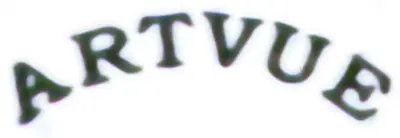
Artvue Postcard Company logo
A. T. F. Company
The A.T.F. Company, Chicago seems to have been active from 1905 and continued into the divided back era. They specialized in views of Illinois and humerous cards.
Bamforth & Co. Ltd.
Bamforth's are probably one of the best documented postcard printers and publishers. This is probably due to them producing postcards variously descibed as "saucy," to "smutty," to "pornographic."
Rather than rewrite what plenty of other people have written about the company, here is a list of some of the most informative:
Bamforth & Co Ltd (Wikipedia)
Bamforth the Original Yorkshire Based Saucy Postcard Company (Internet Archive)
Bamforth and Co., Limited (Huddersfield Exposed)
Bamforth and Company Limited Collection (Jisc Archives Hub)
Donald McGill Museum - Donald McGill created over 12,000 postcards between 1904 and 1962
Mercury Print & Packaging - Mercury were given the exclusive right to reprint these Bamforths' postcards and other licensed products
Remembering Bamforth & Co. Ltd (Internet Archive)
Saucy Seaside Postcards and Censorship (The Postal Museum)
The Art of Donald McGill (The Orwell Foundation)
The Bamforth Postcard Collection brochure - From the Mercury Print & Packaging site
The History of Bamforth & Co. Ltd & Where it is Now
Harvey Barton & Son
The company was based on St. Michael's Hill, Bristol, and operated between 1885 and 1960. They were photographers who published real photo postcards of their landscape work in southwest England. Many of these cards were hand coloured. The postcards sometimes had a simple H. B. & S., H.B. & S. B., H. B. & S. Ltd., or H.B. & Son, Ltd., B. printed on the back of the postcard. They also produced printed art reproductions and a set of picture postcards under the Vistasound name that could be played as 45rmp records. They were manufactured by the Hardy Record Mfg. Co. of London.

Harvey Barton & Son logos
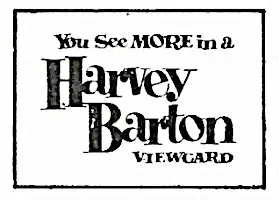

Harvey Barton & Son Vistasound logo
Brislington Community Museum has a biography of the family.
Butler Enterprises, Inc.
The only reference I can find to this company is a furniture dealer in Winston-Salem, North Carolina with the same zip code as the one on the postcards. It was not unknown for companies to publish postcards as well as carry on their main business.
Colorcraft Studios
Colorcraft Studios were based at 114 E. 32nd St., New York, N.Y. 10016. It shared the premises with Eston-Colorcraft Corp. They were active in the 1960s and 1970s.
Colourpicture Publishers, Inc.
A major publisher and printer of linen view-cards of the United States based in Boston and Cambridge, Massachusetts between 1938 and 1969. In Boston, they had premises at Newbury Street with a factory at 76a Atherton Street. They later went on to publish photochrome postcards and small spiral bound picture booklets under the trade name Plastichrome in the 1950s.
In April 1950, the Hiawatha Card Company and Colourpicture had a business agreement but there was a disagreement between the companies over who owned the copyright of the images and the Hiawatha Company sued Colourpicture in May 1963, over 803,855 postcards Colourpicture had published. In Jnuary 1966, the court found that Colourpicture had infringed 83 copyrights owned by Hiawatha and was ordered to pay $20,750. Interestingly, Mr. Lawrence F. Tichnor was working at Colourpicture at the time, but I do not know if he was connected or related to Tichnor Brothers, Inc. who were also working in Boston and Cambridge at the same time period.The company was still operating until at least 1986. Justia Trademarks say the company was issued the following traemarks:
Plastichrome - August 2, 1949
White logo - For White Greeting Cards - October 11, 1961
ColourPicture - March 26, 1964
Scenicard - Postcards sold as sets detachable by the user - July 27, 1965
Plastichrome (again) - Postcards and matchbooks - November 15, 1965 - This trademark expired on January 18, 1987
Kolor Pak - Packs of prints - July 3, 1969
Cindy - Paper plastic laminated placemats - March 25, 1975
Little Girl - Greeting cards and calendars- February 25, 1976
Plaque Mat - Picture placemats and wall plaques - April 4, 1977
House of Athertom - Christmas Cards - August 4, 1978
Trav-L-Stix - Pictorial Adhesive-Backed Decals - May 4, 1982
See-Thru Candles - Glass cylindercandles - September 30, 1982
Grand Award - Calendars - June 25, 1986
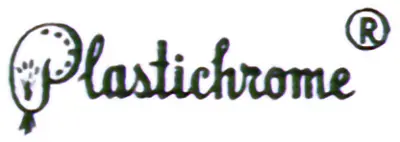
Colourpicture Plastichrome logo
In 1965, Colourpicture sued Mike Roberts Color Productions over it's Scenicard patent of detachable postcards and how they were fixed to a wall. Postcards joined by a perforated strip were patented in England by Herbert John Haddan on April 19, 1904. Robert's "Six-Pix" strip of postcards were aligned horizontally and not verictically as Colourpicture's Scenicard. The court ruled that ColourPicture's Scenicard patent was invalid because of a lack of invention over the prior art and that "there was 'no invention' in using a hole to hang a piece of paper on a wall."
Postcards published by Colourpicture Publishers (Wikimedia)
Curt Teich
In business from 1898 to 1978. It's hard to date early Curt Teich postcards as they were not well documented. After 1913, dates began to appear occasionally in the order books kept by the company and from 1922 on, production dates were well documented. Their U.S. factories turned out more cards in quantity than any other printer. They published a wide range of national view-cards of America and Canada. Many consider them one of the finest producers of White Border Cards. The Linen Type postcard came about through their innovations as they pioneered the use of offset lithography. In 1974 the Teich Company was sold to Regensteiner Publishers also in Chicago. The Teich Company continued to operate in the same building and continued printing Teich postcards until 1978 when the plant closed.
The Curt Teich Postcard Archives Collection is held by the Newberry Library, an independent research library, specializing in the humanities and located on Washington Square in Chicago, Illinois. The library provides a guide to dating Curt Teich postcards.
Dexter Press & Mid-Western Map Company (MWM)
Thomas A. Dexter began Dexter Press, a one-man shop in Pearl River, New York, in 1920. With the production of the very first natural color post card in 1932, Tom Dexter established a tradition of innovation and craftsmanship that would be associated with the Dexter name for years to come. While all the photochromes printed by Dexter boor the words Genuine Natural Color they went through a variety of phases. Their early photochromes went under the name Dextone and tended to be flat and somewhat dull in appearance. As years went by their optical blending techniques improved producing richer and more varied colors.
During that same time period, the Burney brothers, located in Aurora, Missouri, were quickly becoming one of the largest road map printers in the country. From their MidWest Map Company grew MWM Color Press.
In 1980, the two companies combined forces to create MWM Dexter.
The Postcard History site has a guide to dating Dexter Press postcards.

Dexter Press logos
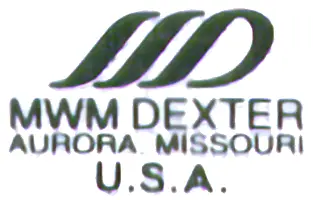
MWM Dexter logo
Duckboy Cards
 Duckboy Cards is a relatively new publisher based in Hamilton, MT and owned by Paul Stanton. From his story he started selling postcards, mostly photos and photo-montages in 1987. The company now sells a variety of novelty goods.
Duckboy Cards is a relatively new publisher based in Hamilton, MT and owned by Paul Stanton. From his story he started selling postcards, mostly photos and photo-montages in 1987. The company now sells a variety of novelty goods.
Theodor Eismann
Theodor Eismann was a German lithography, letterpress, and chromolithography publishing and printing company that produced picture postcards almost exclusively for the English-speaking U.S. market. The company was formed in 1884 and were based in Leipzig. Theodor Eismann had retired by 1903 and the company was run by a son, Eduard Theodor Paul Eismann. The company also had offices in New York and that as run by Theodor's brother, Gustav Edmund Ernst Eismann.
Their postcards were often marked "Theochrome Serie"
Also see The Postcard Album
General Comics
Another publisher I cannot find much about. General Comics were based in Mohegan Lake, New York and appear to be operating from at least 1938, possibly before, until the 1950s.
E. L. Godecke
E. L. Godecke published several Terre Haute, Indiana postcards. The bookstore which was located on Wabash Ave, just east of Fourth Street. It burned in 1896 with the fire which took the Naylor Opera House. The proprietor was E. L. Godecke and one clerk was Walter Leeds. Godecke was still publishing postcards in the late 1910's.
Hiawatha Card Company - Hiawatha Card Company of Detroit - Penrod Hiawatha Company
The Hiawatha Card Company was a co-partnership consisting of Donald J. Gridley and Lucy J. Gridley who formed the company in 1950. In April 1950, the company worked with Colourpicture Publishers. In 1959, Hiawatha Card company sold part of its business to Mr. and Mrs. Gunn of Ypsilanti, Michigan for $53,000, and included in the sale were 300 color transparencies.
The Gunns, as the Hiawatha Card Company of Detroit, signed an exclusive distribution agreement with Colourpicture. There was a disagreement between the companies over who owned the copyright of the images and the original Hiawatha Company sued Colourpicture in May 1963, over 803,855 postcards Colourpicture had published. In Jnuary 1966, the court found that Colourpicture had infringed 83 copyrights owned by Hiawatha and was ordered to pay $20,750.
The Gridley's retired in 1969 and sold the Hiawatha Card Company to John & Alice Penrod who were working as the Penrold Studio. The new company was named Penrod Hiawatha. In 1979, the Gunns sold the Hiawatha Card Company of Detroit to Penrod Hiawatha.
Penrod Hiawatha is still in existence and the company history is on their website.
J. Raymond Howe
Raymond Howe is probably the same person as J. Raymond Howe who was printing his own cards in Chicago from around 1904 to 1914 or 1916. The company was an important card publisher and a prolific publisher of greeting cards, especially Christmas cards, cartoons, and topical cards featuring subjects such as suffragettes. Their graphics were influenced by the Arts & Crafts movement.
Illustrated Post Card Company
 The Illustrated Post Card Company of 118 Chambers Street in New York was printing millions of cards at a time when picture postcards were at the peak of their popularity.
The Illustrated Post Card Company of 118 Chambers Street in New York was printing millions of cards at a time when picture postcards were at the peak of their popularity.
Another address given for them is 520 West 84th Street, New York and they operated from 1905 to 1914. They published a wide variety of color halftone lithographic cards in series that were printed by Emil Pinkau in Leipzig, Saxony. Each city or location of their color card sets were assigned the same number prefix.Their best known cards are from a very large set that captured scenes throughout the City of New York. These cards tended to use brighter than average colors and were titled in a very distinct font.
Similar cards, but with more subdued writing, appeared afterwards depicting scenes from the surrounding regions such as Long Island. In 1909 they stopped importing cards from Germany and began printing their own. A large number of black & white cards were produced in a more open halftone with some being poorly hand colored. These black & white cards were numbered consecutively.
There was also another company with the same name that worked from 1907 to 1915 in Montreal, Canada. These published Canadian views in black & white and color continuous tones with the cards being made in Germany.
Indiana News Company
Started in 1909 in Indianapolis this was a local publisher and distributor of postcards for the American News Company.
Indianapolis Engraving Company
This company was operating between at least 1916 and 1943. Sybil Hunt Connell (1895-1983), also known as Sybil G. Hunt, was a commercial artist for the company.
Inland Publishing Company
This company was based in Terre Haute and seems to have published all types of printed matter. The earliest mention I can find for this company is 1896 and was still in existance until at least 1905
Here are some of the books the company published:
1896 - "A New English Grammar" by J. B. Wisely
1896 - "An Outline of Method in History" by Ellwood W. Kemp
1896 - "Language of the Grades" by J. B. Wisely
1897 - "Studies in Indiana Geography"
1897 - "Syllabus of Lectures on European History" by Andrew Stephenson
1898 - "Literary Art" by Harriet Noble
1899 - "The Inland Educator"
1904 - "Teacher's Manual for Walsh's New Grammar School Arithmetic" by Walter Piety Morgan
1905 - "The Government of the State of Indiana" by William W. Thornton
There was another company named the Inland Publishing Company that operated in Spokane, Washington around the same time, but I do not think the companies were connected in any way.
Tom Jones
Based in Cincinnati, Ohio between 1900 and 1917, Tom Jones published lithographic view-cards of middle America in monochromes or by using a strong blue overprinting on top of a black & white open halftone. Some of their later cards were printed by Curt Teich.
Kadel Photographers
Robert N. T. Kadel opened a shop that was later to become Kadel's Holiday Shop at 675 Wabash Avenue, Terre Haute, Indiana in 1906. When Robert died in 1955, his son, Robert James Kadel took over the business. During World War II he was a USAAF combat cameraman and he naturally took to aerial as well as industrial and news photography. As well as his own photography he was also photographer for the Terre Haute Star newspaper and United Press International news service.
Source: "Terre Haute's People of Progress" by Harold Kay Buckner (Biographers Inc., 1970)
S. H. Knox & Company
Based in Buffalo, N.Y. this company operated between 1884 and 1911. Seymore Horrace Knox went into partnership with his cousin Frank Woolworth to open his first five & dime store in Reading, Pennsylvania in 1884. He continued to open more stores until he became the second largest chain in the United States. Knox is noted for opening the first five & dime in an urban setting, Detroit. As interest in postcards grew Knox not only became a major distributor of cards through his stores but a publisher as well. In 1911 his stores were incorporated into the F.W. Woolworth & Co. chain.
Koppel Printing Co.
Koppel Printing Co. was located at 225 W 39th Street, New York. In the late 1950's, the company promoted their colour offset process. By the mid-1960's Koppel was one of the largest postcard publishers in America, along with Dexter Press.
Postcards printed by them can be identified by the Diamond K mark they used.
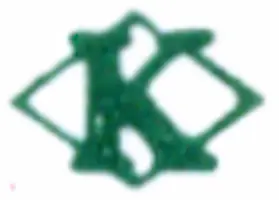
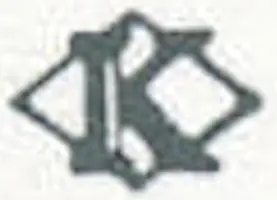
E. C. Kropp & Company
Emil C. Kropp (April 1, 1860 - December 24, 1907) was a Milwaukee publisher. Emil was born in Hamburg, Germany, and emigrated to the United States in 1871. Around 1897 or 1898 he visited his homeland and was inspired by the postcards he saw. On his return to Wisconsin, he began publishing his own postcards with the first appearing in 1898. Emil was one of the first, if not the first, people to produce advertising mailing cards among the high quality souvenir and private mailing cards he produced.
When Kropp died in 1907, the firm was taken over by his children, Adolph Kropp (1900 - 1918), Walter Kropp (1902 - 1913), and Herbert Louis Kropp (1903 - 1973), who created E. C. Kropp and Company. The company operated until 1956, producing a great many lithographic postcards of views and other subjects from some early pioneers, to fine grain linen cards. in 1956 they were sold to L. L. Cook and are now part of the GAF Corp. U.S.
Landeker & Brown
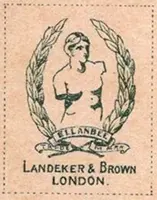 The firm was based at 28 and 30 Worship Street,in the Finsbury district of central London and operated between c1899 and 1954. They published postcards and fine art prints in series in a variety of different subjects and genres using halftone lithography and also a collotype chromolithographic process for their artwork reproductions.
The firm was based at 28 and 30 Worship Street,in the Finsbury district of central London and operated between c1899 and 1954. They published postcards and fine art prints in series in a variety of different subjects and genres using halftone lithography and also a collotype chromolithographic process for their artwork reproductions.
Between around 1899 and 1907 they were also known as Landeker, Lee & Brown. This company may have been in operation a little earlier as some prints were found to be published in 1887.
Their postcards were designed at their offices but printed in a number of countries including Austria, Bavaria, Belgium and Germany, and published with the trade name Ellanbee (Landeker & Brown - L & B - Ellanbee).
A little after 1900, they produced a series of postcards entitled "Girl Soldier", which depict fairly accurate drawing of military uniforms but being worn by women! The artist was comic postcard artist William Henry Ellam (1858–1935).
There was a series, printed in Italian, of the Roman Colosseum games, and others depicting an art nouveau style series, British colonial scenes, Dutch scenes, English countryside, a fiscal series, fox hunting, Japanese scenes, London scenes, a series by artist Phil May, The Poetry of Motoring and others. Apart from William Henry Ellam and Phil May, other artists whose work was used by the company were René Bull, James Yates Carrington, Stanley Cock, and Edward Poynter.
Their postcard production started when the company was formed but seems to have ended with the start of WWI in 1918, probably because they no longer had access to their continental printers. They also published photogravures (some hand colored), etchings and engravings with some as limited edition proofs. After 1920, they seem to have diversified into other product lines.
They exhibited at the 1922 British Industries Fair and were listed as "Manufacturers of Frames, Framed Mirrors, Invalid Bed Tables, Oak Tea Trays, Picture Overmantels, Fire Screens, and Jig-Saw Picture Puzzles. Fine Art Publishers."
By the summer of 1953, the company had gone into receivership and was fully liquidated around the summer of that following year.
Extracts from the "Stock exchange sheet for the German book trade and its relatives in Leipzig", of July 15, 1898 and July 27, 1899:

Stock exchange sheet for the German book trade and its relatives in Leipzig
News from the German goods trade
From July 15, 1898:

A Partridge Drive. (Three hunters with a dog in a landscape shooting at Rebbunnern.) After the painting by H. Hardy, 1893 in Photogravure, on Chinese paper 61 and 41 c. 21 No. (London 1895: Landeker, Lee & Brown.)
From July 27, 1899:

Amongst the guns at Waterloo. The Scots Greys, unheeding of the command to halt and vally etc. Battle scene. After paintings by R. Hillingford in Photogaravure on Chinese paper 42 1/2 u 71 No. (London 1899: Landeker, Lee & Brown.)
Also see Baldry Family History Society. Newspaper extracts from SLUB Digital Collections.
H. C. Leighton & Company
Adam Philips Leighton (1851-1922) started work at booksellers Chisholm Brothers in Portland, Maine in November 1867. The book store began enlarged their book and news business and Adam’s son, Hugh Chisholm Leighton (1878-1943) later managed the company and began printing postcards. The Chisholm company had long specialized in view books illustrated first with lithographs and then with black-and-white photographs. Knowing about the pictorial postcards used in Europe, Leighton bought sheets of one-cent postals from the government and had single-colored pictures put on the side not reserved for an address. The first were produced in 1888. These early cards bore the Chisholm company name. Adam eventually began to publish postcards under his own name between 1906 and 1909 and the company became very successful.
Leighton's became a major printer and major publisher of national view-cards, especially scenes of New England. They printed most of their cards in four distinct styles employing halftone lithography. Most used a simple soft yet highly recognizable RGB pallet. While some cards were printed at their plant in the U.S. most were manufactured in Frankfort, Germany. Almost all their cards were numbered. They merged with Valentine & Sons in 1909 along with Sackett & Wilhelms. The new company was named Leighton & Valentine and continued until 1914.
Another set of cards in halftone lithography were printed in a wider range of colors using a very bright pallet. Their titles appear in bright red. A very distinct card set was printed in a limited but brightly colored continuous tone lithography with a dominating orange and matte finish. The intensity of coloring on these cards can vary widely, which renders some very beautiful while other copies of the same image can be extremely garish. This technique only seems to have been used on view-cards of southern Maine. Other techniques were employed as well including collotypes and some hand colored cards but these can only be found in small numbers.
A more mysterious set of cards seem to have been made in gravure with very fine detail and a dry looking finish. While these cards were not produced using a halftone, their skies still exhibit a dot pattern most likely from ben-day. While these view-cards were produced nationally in great quantity, Leighton's name only appears on relatively few of them. Most contain the names of small local publishers, a card number, and notice that they were printed in Germany. It becomes uncertain if all these publishers were contracting cards with Leighton or directly through his German printer.
Also see The Hugh C. Leighton Company, Portland, Maine (Southwest Harbor Public Library)
Levin Brothers
They appear to have been dry goods wholesalers in Terre Haute, Indiana. It was not unknown for companies to publish postcards as well as their main business.
Ezra Meeker
In 1852, Ezra Meeker travelled westward along the Oregon trail and eventually settled in Seattle, Washington. In 1910, he made the 2,630 mile journey in reverse, from Washington State to Indiana. Along the way he urged people to erect the Oregon trail historical markers and published a set of postcards of his journeys"
Floyd Mitchell
Floyd Mitchell of Bridgeton, Indiana died in 1983. On his death, one of his sons, Charles E. "Lucky" Mitchell, ran Floyds postcard and souvenir business for another 20 years. Charles died, aged 83 on Friday, April 4, 2008.
National Art View Company
Unfortunately I know nothing about this company except that it was bought by the Rotograph Company in 1904.
National Press Company
The National Press Company was a Chicago-based printing and advertising company active in the late 1940s and early 1950s. The company specialized in promotional materials and printed novelties such as matchbook covers, calendars and postcards produced for political figures and small businesses.
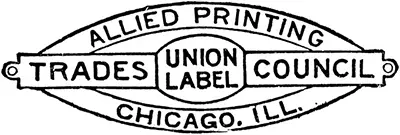
The Allied Printing Chicago Trades Council Union logo appears on many of their printed items.
I & M Ottenheimer
In August 1890, Isaac Ottenheimer, aged 19 and his 14-year old brother Moses rented one-half of a store located at Baltimore and Pine Streets in Baltimore, Maryland to sell books. By 1940 the firm had more than 100 joke books, many of them written by the brothers using pen names of Moe and Joe Ott. They also published a great many view-cards of the mid-Atlantic region from early hand colored cards to linens. By 1919, the company of I & M Ottenheimer had moved its headquarters from Baltimore and Pine to 800-802 East Fayette Street. Isaac Ottenheimer and wife lived at 2601 Madison Avenue, apartment 1206 in 1929. He died in 1953. By 1963, the business was being carried on by two grandsons, A. T. Hirsh, Jr and A. D. Sheffler. The firm's headquarters were located in Pimlico.
Source: Baltimore City Postcards (Internet Archive)
Penrod Studio - Penrod Hiawatha Company
John and Alice Penrod of Michigan who operated a photography studio, Penrod Studio and became involved in creating picture postcards in 1958. In 1969, Donald J. Gridley and Lucy J. Gridle operating as the Hiawatha Card Company retired and sold the company to Penrod Studio and the new company was named Penrod Hiawatha. Mr. and Mrs. Gunn operating as the Hiawatha Card Company of Detroit, sold the business to Penrod Hiawatha in 1979.
Penrod Hiawatha is still in existence and the company history is on their website.
Mike Roberts Color Productions
Mike Roberts was an American photographer and publisher. He left home at sixteen with $25, a box camera, and his Harley. Roberts arrived in the Bay Area in 1934 and began working as a photographer in Berkeley.
By 1941, he was a partner in the Litho Screen Company of Oakland. Robert's first known postcard shows Yosemite Valley and is postmarked June 12, 1945. In 1949, after using several different publishers, he founded "Mike Roberts Color Productions" and became involved with commercial postcard production.
In 1965, Colourpicture sued Mike Roberts Color Productions over it's Scenicard patent of detachable postcards and how they were fixed to a wall. Postcards joined by a perforated strip were patented in England by Herbert John Haddan on April 19, 1904. Robert's "Six-Pix" strip of postcards were aligned horizontally and not verictically as Colourpicture's Scenicard. The court ruled that ColourPicture's Scenicard patent was invalid because of a lack of invention over the prior art and that "there was 'no invention' in using a hole to hang a piece of paper on a wall."
Roberts died in 1989 but his company continued operating until 1998.
Rotograph Company
This company operated between 1904 when it took over the National Art View Company, and lasted until 1911. Based at 684 Broadway, New York City they also had offices at 215 Wabash Avenue in Chicago. They produced around 60,000 postcards which were mostly printed in Germany and France.
Sources: Rotopex (Internet Archive) and The Rotograph Project
W. H. Smith
W H Smith the British stationery company which was established in 1792, produced a series of postards under the name of the Kingsway Real Photo Series. Both the WHS and Kingsway logo changed over the years. Some cards have the words Smith's Circulating Library printed in the stamp box. These cards were manufactured in Great Britain. Some have the initials JV on the image side indicating they were printed by the Valentine Company Limited.
Apart from the printed Kingsway Real Photo Series, ther ewere also logos produced for the series:
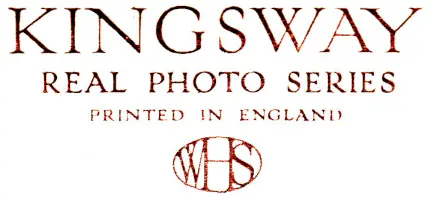

WH Smith postcard logos
Smith's built Bridge House to house the Bookbinding Works and Stationery Department in Lambeth, London which produced the Bridge House Real Photo series of postcards.
Smith's also produced the Aldwych, Aqua-Tone, Castle, County, Forth, Grosvenor, K, Majestic, and Royal York series of postcards.
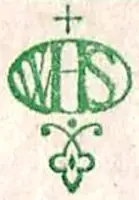
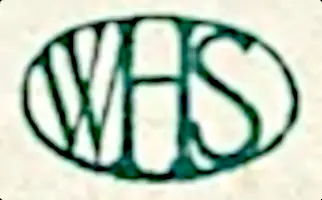
WH Smith postcard logos
Souvenir Post Card Company
A major publisher of a variety of postcard types based at 268 Canal Street, New York between 1905 and 1914. They used three different printers over the course of their business, which changed the look of their cards. Some of their early cards were printed with the name E. Frey on them who may have been the owner. The company was purchased by Valentine and Sons. and they produced cards in America under the name Valentine-Souvenir Company.
Their cards were numbered:
Color cards: 1-3099 and 12000-15000.
Green & white: 3100-5999 and 15000-up. Many of these cards were reprints of color issues (often with glitter to enhance their dull look).
Black & white: 6000-11999 in halftone lithography.
Springfield News Company
Based in Springfield, MA, the Springfield News Company were a publisher and distributor of local postcards for the American News Company. The company was in operation from at least 1901 to 1937, but possibly before and after these dates.
Taylor Pratt & Co.
This company was based at 1161 Broadway, New York, N.Y. This company operated at least between 1907 and 1908 but I think the company was in existence for longer than this.
The Rose Co.
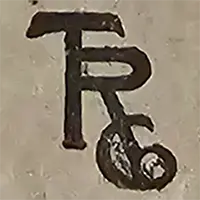 The Rose Co. logo very kindly supplied by Steven James.
The Rose Co. logo very kindly supplied by Steven James.
The Rose Co. was based in Philadelphia, Pennsylvania.
Their range of subjects were historical, holidays, actresses, patriotic, comic, biblical, and many others. They used some unusual printing techniques such as very bright colours, a padded "silk" type, heavily embossed cards and a type where the message side of the divided back was used for advertising other companies such as Greenfield's chocolates.
The company produced sets of baseball player cards. In the summer of 1908, the company produced a set of 192 cards, 12 cards for each of the 16 Major League teams, and also a 14 card set of the Minor League Scranton, PA, team. Dean's Cards say there were 216 known cards in the 1908-1909 sets and that they are the "most desired pre-war postcard sets in existence." The Sports Collectors Digest site has copies of the cards and has a checklist of them. See lso the Professional Sports Authenticator site. Collectors will pay hundreds of dollars, sometimes thousands, for individual cards in this series.
The Rose Co. of Philadelphia, Pennsylvania has no connection with the George Rose Stereograph Company of Sydney and Wellington, Australia.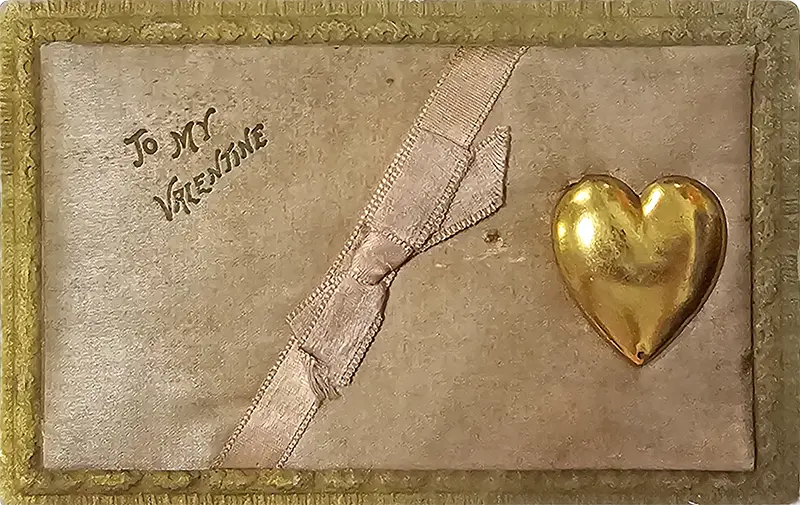
Rose Co. padded silk postcard
Image kindly provided by Steven James
Steven wrote about this card:
It is the size of a regular postcard, with a slightly thicker, heavier-weight card. The edges are gold/gilt color, with stripes on the outside-most edge. Between the striped design and the center of the card (described subsequently) there are leaf/floral patterns and lily flowers near the corners. The center of the card has a fabric, with a silk-like feel, that seems to have some sort of "stuffing" (for lack of a better word) as it is soft when gently depressed with the finger. A ribbon and bow, text, and a gold, seemingly hollow, heart decorate the front. The heart appears to have a hole at the bottom where it could be sewn on (but with no apparent thread present), so I don't quite know how it's attached.
The reverse is a divided back with a logo I have tentatively identified as "The Rose Company," but is otherwise devoid of unique manufacturer's marks, and only a short seemingly original inscription and new markings (Booth Number and Price) from where I purchased it at an antique store. A groove roughly corresponding to the edges of the fabric at front runs along the reverse on all 4 sides. The text and markings are very bright and vivid, which I thought may indicate reproduction, but the card is not blacklight reactive and has the look, feel, smell, and other consistent factors indicative of an original.
I thought then, that maybe the fabric and accoutrements may have been added post-manufacture and purchase, but the fabric has wear consistent with the rest of the card, with only the heart having less apparent (but still present) wear, and seemingly has been with the card since production.
Theodor Stroefer (1877-1958)
Stroefer began his career working for the Munich publisher Friedrich Bruckmann. In 1866 he was sent to New York City where he opened an office for the firm. While there he met Georg Kirchner, and in 1871 they joined together to form their own publishing business, Stroefer and Kichner. Stroefer returned to Munich in 1876 where he opened an office for his own New York firm.The following year the partnership was dissolved with Kirchner & Co. taking over the American market and Theodore Stroefer would serve Europe. By the time Stroefer moved his firm to Nuremburg in 1893 he was a well known publisher of many chromolithographic products that included children's popup books, calendars, and games. After accessing artwork from Ernst Nister's Art institute of Photographic Reproduction, Stroefer became an early publisher of postcards. He reproduced the work of many popular artists including Raphael Kichner, Arthur Thiele, and Max Klinger.
Stroefer was still reproducing military themed art in chromolithography during World War One but the firm changed over to tricolor printing in the postwar years. After Theodor died in 1927 his son took over the business. Their facilities were greatly damaged toward the end of World War Two and the records lost. The company closed altogether in 1958. Stroefer is buried in the Nuremberg Johannisfriedhof, plot no. I/1230
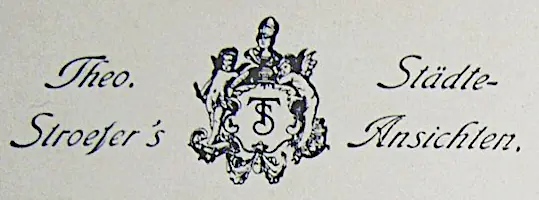
Theodor Stroefer logo
The postcards usually have T.S.N., for Theodor Stroefer of Nuremburg, printed on them.
Tichnor Brothers, Inc.
A major publisher and printer of a wide variety of postcards types from 1912 to 1987 and based at 160 N. Washington Street, Boston and Cambridge, MA. The company was founded by brothers were Harry N. Tichnor (July 7, 1877 - July 26, 1911) and Louis Tichnor (September 11, 1879 - November 6, 1974). Their view-cards were distributed nationally and their main business rivals were the Curt Teich company (1898 - 1978). Tichnor also produced a black white open halftone series on the hurricane of 1938. Their photochomes went under the trade name Lusterchrome which was registered as a trademark on May 17, 1955. They also produced an early Tichnor Gloss series that was so heavily retouched they floated somewhere between being artist drawn and being a photograph. The company was sold in 1987 to Paper Majic.

Tichnor Brothers Lusterchrome logo
The company records are held by the Boston Public Library and the collections can be found on the Digital Commonwealth and Flickr.
Raphael Tuck & Sons
This British company with offices in London, Paris and at 122 Fifth Ave, New York, operated between 1866 and the 1960's. They were founded in London, selling pictures and frames. Raphael Tuck was joined by his three sons in 1871 and published their first Christmas greeting card. In 1893 they were granted a Royal Warrant by Queen Victoria and most of their cards proudly proclaim "Art Publishers to Their Majesties The King and Queen".
Adolph Tuck, one of the sons, produced their first picture postcard in 1894 of Mount Snowden in Wales, which was sold to tourists visiting the site. They entered the postcard market in the United States in 1900 with an office in New York. American artists designed many of the postcards, but the cards were printed in Europe (Germany, Saxony, and England) and then returned to the states for sale. Unfortunately, like many other postcard printers and manufacturers of their time, the history, records, original paintings and postcards of Raphael Tuck & Sons were destroyed during the bombing blitz of London during World War II. Raphael Tuck & Sons were prolific printers and produced books, postcards, greeting cards, die cut cards, fringed silk cards, scrapbooks, puzzles and more.
Also See: About Postcards, Emotions Greetings Cards, Old & Sold (Internet Archive), and Tuck Gramophone Postcards
Union News Company
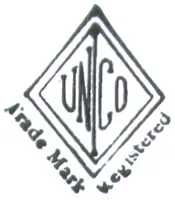 Based in New York between 1908 and 1969 this was a wholly owned subsidiary of the American News Company they became major distributors of postcards and other printed items through their newsstands at hotels, rail and subway stations. Their cards were published by a variety of different companies including American News, Curt Teich, Robbins Brothers, and Valentine & Sons. Sometimes only their logo appears on a card, but it is often hand stamped on cards not originally published for them.
Based in New York between 1908 and 1969 this was a wholly owned subsidiary of the American News Company they became major distributors of postcards and other printed items through their newsstands at hotels, rail and subway stations. Their cards were published by a variety of different companies including American News, Curt Teich, Robbins Brothers, and Valentine & Sons. Sometimes only their logo appears on a card, but it is often hand stamped on cards not originally published for them.
Valentine Company Limited
Based in Dundee, Scotland and London, England between 1825 and 1963 this was a major publisher of views. The Valentine Company, a lithographic printing firm, was founded in 1825 in Dundee, Scotland by John Valentine. His son James became an early pioneer of photography and by the 1860s his work was being reproduced by the Valentine Company as prints and stereo-views. After James' death in 1879 his two sons, George Dobson and William Dobson took over the Company, but in 1884 George moved to New Zealand where he became a landscape photographer.
In 1880 Valentine began producing Christmas cards and by 1896 they began printing postcards. Up until 1882 they had only published views of Scotland, but they began expanding into other tourist markets especially after their postcard business took off. Other offices opened in Jamaica, Medeira, Norway, Tangier, Canada, and New York. They produced a great range of view-cards that were mostly printed in Scotland in halftone lithography or issued as real photo cards. In addition they produced a vast array of other products that held photographic images.
All interests outside of Great Britain were sold in 1923 and by 1929 they had given up their photo portraiture work to concentrate solely on postcard production. But they did not anticipate the public's growing demand for color cards and by the 1950s their business was suffering. In return they put most of their efforts into greeting cards. They were purchased by John Waddington & Co. in 1963, which passed on to Hallmark Cards in 1980. Dundee operations closed in 1994. Their cards are numbered on the front in hand, which sometimes makes the figures illegible.
In the 1890s until 1902 most cards were printed in black & white with undivided backs. In these years they also produced an Artotype series of illustrated scenes in color. By the 1900s they were producing a great number of views of Great Britain labeled as the Valentine Series. These came in a number of variations including cards that were hand colored, printed in color, and printed in various monochromatic colors. They were mostly numbers in series of four to five digits. Their color cards were printed in a lithographic halftone with a simple but highly distinct RGB pallet.
Their Mezzograph series was also produced lithographically in a limited pallet, but in a fine continuous tone. The colors on these cards tend to have a heavy look to them. In these same years they produced a series of color and black & white moonlit views, a card series depicting Edinburg in paintings, greeting cards, real photo cards, and a series of views in sepia called Selectypes. An XL series was also produced for sepia toned real photo cards.
After the First World War, Valentine produced a wide variety of view cards in addition to their Artotypes with many brand names. Carbo-type and Silveresque cards were printed in lithographic black & white halftones to simulate photographs, while Carbotone cards were printed in sepia. The Photo-gravure series was also printed in sepia but in gravure rather than lithography. Real photo bromide cards were made under the names Bromotype and Bromotone, and a series of Glossy view-cards with an embossed frame were issued under the Crystoleum Series name. Valentine also made a number of etching reproductions in these post war years.
Photo-Brown cards were printed in a dull dark brown using halftone lithography. They have the unedited look of toned real photos. Colourtone cards were issued in the 1930's and printed in halftones using a distinct red, yellow, and blue pallet. They are distinguished by thick Tartan patterned borders with symbolic elements added. Carbo Colour cards from the 1930s also came with Tartan borders but many were also printed with plain white borders. They were printed in halftone, often with ben day patterns added, in RGB colors with little optical blending. They often have the look of being hand colored.
Borderless artist signed cards were made through the 1940s and 50s, and printed in color under the Art Colour name. These cards had a distinct RGB pallet and were printed in halftones that produced a rosette pattern. Another type of borderless artist signed card were issued in the 1950s and printed under the Valesque name. These cards have a similar halftone pattern to that of the Art Colour cards but here the hues easily blended to create more optical colors.
By the 1940s the changes in printing technology ushered in a new series of card types with it. New color view-cards came out under the names of Valchrome and Collo Colour, while black & white and sepia cards were produced in gravure under the name Velvette Gravure. They also produced a series of Aerial cards and of folding cards called Mail Novelties. But by the 1950s more emphasis was put into the production of greeting cards as their popularity outpaced that of postcards. Their last black & white postcard was printed in 1967.
A number of view-cards of Ireland were published out of their office in Dublin. While they generally have the same printed appearance as those depicting scenes from England and carry the Valentine name, their logo is completely unique. Another set of Irish view-cards were issued by Valentine in Dublin with decorative borders filled with clover. These cards have the normal Valentine logo on them and were printed in Scotland.
Valentine-Souvenir Company
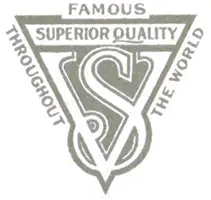 Based in New York between 1914 and 1923 this company was formed by the merger of the Leighton & Valentine Company with the Souvenir Post Card Company. They published halftone lithographic view-cards that were printed in the United States. While their later white border cards retained the usual limited pallet, these cards have an entirely different look. There is much more emphasis on the details that are printed in black rather than the color overprinting.
Based in New York between 1914 and 1923 this company was formed by the merger of the Leighton & Valentine Company with the Souvenir Post Card Company. They published halftone lithographic view-cards that were printed in the United States. While their later white border cards retained the usual limited pallet, these cards have an entirely different look. There is much more emphasis on the details that are printed in black rather than the color overprinting.
F. W. Woolworth Company
Woolworth's were based in New York, and operated between 1878 and 1997. Frank Winfield Woolworth opened his first retail store in Utica, NY in 1878. He became a publisher and major retailer of postcards in 1912. These cards were sold from the company's ever expanding chain of Five & Dime stores both in America and abroad. They had designed and published many of their own Christmas cards since 1879. As other publishers were forced to compete with their bargain prices the quality of postcards was forced downward. Many publishers blamed Woolworth for destroying the postcard craze by dumping cards on the market at prices set below profit margin.
H. G. Zimmerman & Co.
This company, known simply as Zim, operated from Chicago between 1907 and 1911. They published halftone lithographic view-cards from New England to mid-West America in a noticeably limited RGB pallet. They used the trade name Zimochrome on many of their postcards.
Other Printers and Publishers
Information on others will be added as I research them, especially the following...
Adams, Terre Haute, Indiana
Beals, Des Moines, Iowa
Richard H. Bruce, Terre Haute, Indiana
Bundy, Terre Haute, Indiana
C.T. American Art
Dixie News Co. Savannah, Georgia
Jim Doane - photographer
Voller Ernst, Innsbrucker Str. 37 1000 Berlin
Estell Wholesale Co., Seymour, Indiana
Bob Glander, photographer
Gulf Card Co.
P. Harris of Buffalo, New York - leather postcard publisher
W. S. Heal - leather postcard publisher
John M. Heeman, Terre Haute, Indiana
Hermann Souvenir Post Card Co., Hermann MO
Herz's Bazaar
House of Photography, 108 N. 25th St., Terre Haute, Indiana, 47803
Indiana Scenic Images, Indianapolis
Journal Printers Co., Terre Haute, Indiana
Kaeser & Blair, Inc., Cincinnati, Ohio - makers of Picto Cards
(Ken) Martin's Photo Shop, Terre Haute, Indiana
New Central Pharmacy, Terre Haute, Indiana
Photoette (C. U. Williams, Bloomington, Illinois)
John V. Pontiere, Jr.
F. R. Ryan Co., Terre Haute, Indiana
L. D. Smith, Terre Haute, Indiana
Southwest Post Card Co., Box 685, Albuquerque, NM
Sun Coast Post Cards, P.O. Box 1376, Largo, Florida, 33540
Tennessee Postcard Co. Sevierville, TN, 37862
Terre Haute News & Magazine Agency
Terre Haute Post Card & Novelty Company
Viquesney Printing Co., Terre Haute, Indiana
Wabash Valley News Agency, Inc., Terre Haute, Indiana
C. U. Williams, Bloomington, Illinois (Photoette)
J. R. Willis
Bob Wyer Photo Cards, Dehli, N.Y.
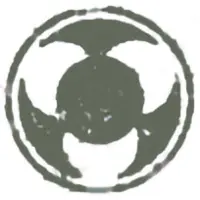
Unknown tri-blade logo
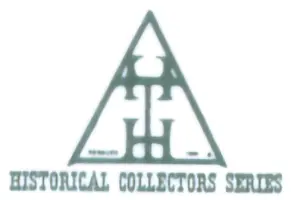
Historical Collectors Series
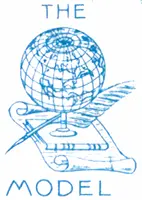
The Model
Sources & Resources
About Postcards
Greetings from the Smithsonian: A Postcard History - A good starting place. The postcard pages are short but very informative
Factories that Printed Postcards (Postcard History)
Metro Postcard - (Internet Archive) A site full of information
Miscellanea Deltiologia - A British deltiology site by Chris Bond that is full of information
Postcard Peddler - An American deltiology site by Joelle Steele that is full of information
Postcard Publishers (Metro Postcard - Internet Archive)
Publisher's logos on old postcards - A nice collection by David Schofield
The Postcard Album - A great history of German postcard printers and publishers by Helmfried Luers
Undivided-back Postcards - A great collection of early postcards and information about them
Why so many German postcards? (Institute for Human Science & Culture)
Wikimedia Postcards - Wikimedia has a whole section devoted to postcards. The WikiProject Postcards section is about the maintenance and improvement of the category